Smoke alarms do save lives
Smoke alarms are the residential fire safety success story of the past quarter century. Smoke alarm technology has been around since the 1960s. But the single-station, battery-powered smoke alarm we know today became available to consumers in the 1970s, and since then, the home fire death rate has been reduced by half. Most states have laws requiring them in residential dwellings.
Working smoke alarms are essential in every household. It is necessary to practice home fire drills to be certain everyone is familiar with the smoke alarm signal, and to determine if there are any obstacles to a quick and safe evacuation (including the inability for some to awaken to the smoke alarm signal).
Facts & figures
- A 2004 U.S. telephone survey found that 96% of the households surveyed had at least one smoke alarm.
- Roughly half of home fire deaths result from fires in the small percentage of homes with no smoke alarms.
- In 1999-2001, an average of 70% of home fire deaths resulted from fires in homes with either no smoke alarms or in which none of the smoke alarms sounded.
- In one-quarter of the reported fires in homes equipped with smoke alarms, the devices did not work. Households with non-working smoke alarms now outnumber those with no smoke alarms.
- Why do smoke alarms fail? Most often because of missing, disconnected or dead batteries.
- If a fire occurs, having a smoke alarm reduces your risk of dying in a home fire by 50%.
- Smoke and fire kill. Fire is fast; you may have less than three minutes to get to safety.
- Smoke is toxic. Get low and go under the smoke.
Source: NFPA's "U.S. Experience with Smoke Alarms and Other Fire Detection/Alarm Equipment."
Smoke Alarms in U.S. Home Fires a National Fire Protection Association Report (2005-2009)
Installation and maintenance tips
- Choose a smoke alarm that bears the label of a recognized testing laboratory.
- Install smoke alarms on every level of your home, including the basement, making sure that there is an alarm outside every separate sleeping area. New homes are required to have a smoke alarm in every sleeping room and all smoke alarms must be interconnected.
- Hard-wired smoke alarms operate on your household electrical current. They can be interconnected so that every alarm sounds regardless of the fire's location. This is an advantage in early warning, because it gives occupants extra time to escape if they are in one part of the home and a fire breaks out in another part. Alarms that are hard-wired should have battery backups in case of a power outage, and should be installed by a qualified electrician.
- If you sleep with bedroom doors closed, have a qualified electrician install interconnected smoke alarms in each room so that when one alarm sounds, they all sound.
- If you, or someone in your home is deaf or hard of hearing, consider installing an alarm that combines flashing lights, vibration and/or sound.
- Mount smoke alarms high on walls or ceilings (remember, smoke rises). Ceiling mounted alarms should be installed at least four inches away from the nearest wall; wall-mounted alarms should be installed four to 12 inches away from the ceiling.
- If you have ceilings that are pitched, install the alarm near the ceiling's highest point.
- Don't install smoke alarms near windows, doors, or ducts where drafts might interfere with their operation.
- Never paint smoke alarms. Paint, stickers, or other decorations could keep the alarms from working.
How to dispose of your Smoke Alarm correctly.
A life-saving test: check your smoke alarms regularly
- Test your smoke alarms once a month, following the manufacturer's instructions.
- Replace the batteries in your smoke alarm once a year, or as soon as the alarm "chirps" warning that the battery is low. Hint: schedule battery replacements for the same day you change your clocks from daylight savings time to standard time in the fall.
- Never "borrow" a battery from a smoke alarm. Smoke alarms can't warn you of fire if their batteries are missing or have been disconnected.
- Don't disable smoke alarms even temporarily. If your smoke alarm is sounding "nuisance alarms," try relocating it farther from kitchens or bathrooms, where cooking fumes and steam can cause the alarm to sound.
- Regularly vacuuming or dusting your smoke alarms, following the manufacturer's instructions, can keep them working properly.
- Smoke alarms don't last forever. Replace yours once every 10 years. If you can't remember how old the alarm is, then it's probably time for a new one.
- Consider installing smoke alarms with "long-life" (10-year) batteries.
- Plan regular fire drills to ensure that everyone knows exactly what to do when the smoke alarm sounds. Hold a drill at night to make sure that sleeping family members awaken at the sound of the alarm. Some studies have shown that some children may not awaken to the sound of the smoke alarm. Know what your child will do before a fire occurs.
- If you are building a new home or remodeling your existing home, consider installing an automatic home fire sprinkler system. Sprinklers and smoke alarms together cut your risk of dying in a home fire 82 percent relative to having neither � a savings of thousands of lives a year.

Sensing systems
Most smoke alarms use one of two common sensing systems for detecting a fire.
- Ionization Smoke Alarms contain a minuscule amount of a material called Americium 241, which emits alpha particles that collide with the oxygen and nitrogen in the air and to create ions. These ions conduct electricity and allow a steady electrical current to flow between two electrodes. Smoke enters the detection chamber and the alpha particles are absorbed by the larger smoke particles, causing a drop in the current, and the alarm is triggered.
- Photoelectric Smoke Alarms employ a light emitting diode (LED) to send a beam of light across a chamber. When smoke enters the chamber, the particles scatter the photons. A photocell installed at an angle to the diode senses the light, and subsequently sets off the alarm.
- Heat detectors are normally used in dirty environments or where dense smoke is produced. Heat detectors may be less sensitive, but are more appropriate than a smoke detector in these environments. The most common heat detectors either react to a broad temperature change or a predetermined fixed temperature.
Heat detectors use a set of temperature-sensitive resistors called thermistors that decrease in resistance as the temperature rises. One thermistor is sealed and protected from the surrounding temperature while the other is exposed. A sharp increase in temperature reduces the resistance in the exposed thermistor, which allows a large current to activate the detector's alarm.
- Flame detectors are line-of-sight devices that look for specific types of light (infrared, visible, ultraviolet) emitted by flames during combustion. When the detector recognizes this light from a fire, it sends a signal to activate an alarm.

Smoke Detectors / Ionization vs. photoelectric.
- Photoelectric alarms respond slightly faster to smoldering fires; ionization alarms respond slightly faster to flaming fires. Since, as a practical matter; you can not predict the type of fire that will occur; the slight difference is irrelevant. Either type of alarm will detect nearly every type of fire quickly. Some manufacturers offer dual-chamber alarms that use both sensor systems.
Smoke detectors are suitable for:
- Indoor areas with low ceilings such as offices, closets, and restrooms.
- Areas that are relatively clean with minimal amounts of dust and dirt.
- Areas that contain solid fuels like wood, paper, fabric, and plastic materials.
Heat detectors are suitable for:
- Dirty, dusty or smoky environments.
- Indoor areas without winds or drafts that can prevent heat from reaching the detector.
- Manufacturing areas where large quantities of vapors, gases, or fumes may be present.
- Areas where particles of combustion are normally present, such as in kitchens, furnace rooms, utility rooms, and garages or where ovens, burners or vehicle exhaust gases are present.
Flame detectors are suitable for:
- Areas with high ceilings and open-spaces, such as warehouses and auditoriums.
- Outdoor or semi-enclosed areas, where winds or draughts can prevent smoke from reaching a heat or smoke detector.
- Areas where rapidly developing flaming fires can occur, such as petrochemical production, fuel storage areas, paint shops, and solvent areas.
- Environments that are unsuitable for other types of detectors.
The National Fire Protection Accociations (NFPA) position on smoke alarms.
- NFPA urges replacing home smoke alarms after 10 years.
- Why? According to NFPA, aging smoke alarms don't operate as efficiently and often are the source for nuisance alarms. Older smoke alarms are estimated to have a 30% probability of failure within the first 10 years. Newer smoke alarms do better, but should be replaced after 10 years. Unless you know that the smoke alarms are new, replacing them when moving into a new residence is also recommended by NFPA.
International Association of Fire Chiefs (IAFC)
- Position Paper / Smoke Alarms � Ionization and Photoelectric Technology
Facts & figures
- Nearly 300 Americans die each year from carbon monoxide exposure, but less than 30 percent have decetors.
- Carbon monoxide is a by-product of combustion, present whenever fuel is burned. It is produced by common household appliances such as gas or oil furnaces, clothes dryers, water heaters, ovens and ranges. A charcoal grill operating in an enclosed area, a fire burning in a fireplace or a car running in an attached garage also produce carbon monoxide.
- According to the Journal of the American Medical Association (JAMA), carbon monoxide is the number one cause of poisoning deaths in the U.S.A. Making sure furnaces and other potential carbon monoxide sources are properly vented and in good working condition, along with owning a UL listed carbon monoxide detector, could become a matter of life and death.
- If anyone is experiencing symptoms of carbon monoxide poisoning: headaches, dizziness, vomiting, call the fire department and immediately move to a location that has fresh air. Do a head count to be sure all persons are accounted for. Do not re-enter the premises until it has been aired out and the problem corrected.

Placement of carbon monoxide detectors.
- Proper placement of a carbon monoxide detector is important. If you are installing only one carbon monoxide detector, the Consumer Product Safety Commission (CPSC) recommends it be located near the sleeping area, where it can wake you if you are asleep. Additional detectors on every level and in every bedroom of a home provides extra protection.
- Homeowners should remember not to install carbon monoxide detectors directly above or beside fuel-burning appliances, as appliances may emit a small amount of carbon monoxide upon start-up. A detector should not be placed within fifteen feet of heating or cooking appliances or in or near very humid areas such as bathrooms.
- When considering where to place a carbon monoxide detector, keep in mind that although carbon monoxide is roughly the same weight as air (carbon monoxide's specific gravity is 0.9657, as stated by the EPA; the National Resource Council lists the specific gravity of air as one), it may be contained in warm air coming from combustion appliances such as home heating equipment. If this is the case, carbon monoxide will rise with the warmer air. For this reason, it is suggested mounting the detector on the ceiling. This also puts the detector out of the way of potential interference, such as pets or curious children.

Source's of carbon monoxide detectors and maintenance tips.
- Gas or oil furnaces are frequently the source of carbon monoxide leaks. Measure concentrations of carbon monoxide in flue gases. Check all connections to flue pipes and venting systems for cracks, gaps, rust, corrosion or debris. Check the filters and filtering systems for dirt and blockages. Check the combustion chamber and heat exchanger for cracks, holes, metal fatigue or corrosion.
- Check furnace flame, burners and ignition systems. A predominately yellow, flat, lazy-looking flame in a natural gas furnace indicates fuel is not burning efficiently and is thus releasing higher than usual levels of carbon monoxide. Oil furnaces with a similar problem produce an 'oil' odor, but remember you can't smell, see or taste carbon monoxide.
- Chimneys and venting systems must be carefully checked for blockages caused by debris, animal nests, cracks, holes or cave-ins. A blocked chimney or venting system can force dangerous gases back into your home.
- Venting and fan systems on all fuel burning appliances must be inspected for proper installation to assure carbon monoxide is vented out rather than in. Don't forget gas water heaters, clothes dryers, space heaters or wood burning stoves.
- Inspect fireplaces for blocked or bent chimneys or flues, soot and debris or holes in the chimney that could release carbon monoxide exhaust back into the home.
- Stove pilot lights in a closed-up home can be a source of carbon monoxide build-up if not operating properly because they are not vented to the outside. Check to be sure they are operating properly.
- Fireplace pilot lights can also produce carbon monoxide and should be checked regularly.
- Never burn charcoal inside no matter how much you want to recapture summer and never use your gas stove as a heater. Keep the oven door closed and use it for cooking only.
- Never leave a car running in an attached garage even if the garage door is open.
- According to UL Standard 2034, home carbon monoxide detectors must sound a warning before carbon monoxide levels reach 100 parts per million over 90 minutes, 200 parts per million over 35 minutes or 400 parts per million over 15 minutes. The standard requires the alarm must sound before an average, heathy adult begins to experience symptoms of carbon monoxide poisoning. The warning provides time to evacuate the premises.


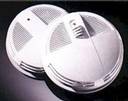
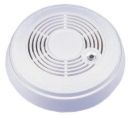

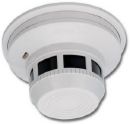

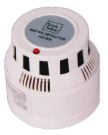
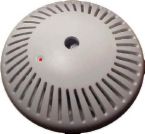







![]()
![]()
![]()
![]()
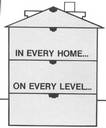
![]()

![]()



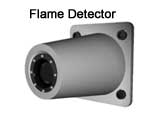
![]()
![]()
![]()
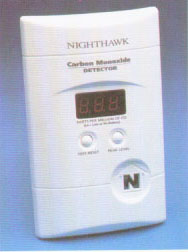
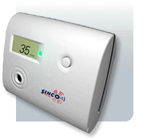

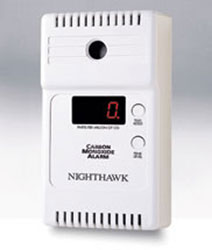

![]()
![]()
![]()
![]()
![]()




